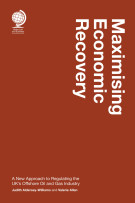Energy Storage: A necessary part of decarbonising, smart electricity systems
15 January 2020

Louise Dalton is a Senior Associate at CMS
Louise Dalton, senior associate at CMS and author of the Special Report Energy Storage: Legal and Regulatory Challenges and Opportunities, discusses why electricity systems need greater flexibility and how energy storage technologies play a necessary part.
2019 illustrated electricity systems’ requirement for greater flexibility, which energy storage technologies are ideally suited to provide. Two events in Great Britain (“GB”) illustrate this in particular: the August blackout and the increasing number of negative electricity pricing events.
The Blackout
The most visible and dramatic occurrence was the blackout impacting over a million people on 9th August 2019. At 4.52pm on the day in question, a lightning strike hit the electricity network, following which both Hornsea offshore windfarm and Little Barford power station reduced their output (by 737MW and 454MW respectively). The lightning strike and the fall in system frequency resulting from this loss of generation caused a further 500MW of distribution-connected generation to disconnect from the system.
During the event, the system operator deployed the reserve it had available, which included 472MW of battery storage. However, the total generation loss was above the amount of reserve power it had available. As a result, the network’s frequency fell outside of the target range of 50.5 – 49.5Hz to 48.8Hz and the demand disconnection scheme kicked in, which automatically discounted approximately 5% of customer demand. These actions resulted in the system returning to normal frequency (50Hz) by 4:57pm. All customer supply was returned within 45 minutes of the incident. Nevertheless, the blackout had wide-ranging consequences, including major rail disruption. Consequently, the system operator, the regulator, Ofgem, and the Government are investigating the incident, in order to implement changes to ensure that it is not repeated. As part of this process, Ofgem announced recently that the owners of the two power stations, Hornsea and Little Barford, have made voluntary contributions of £4.5m each in recognition of their role in the blackout.
The rapid speed of events meant that the system operator had seconds to instruct its ancillary services providers to response, emphasising the vital role that fast-acting frequency response providers play in maintaining a stable and secure electricity network. Energy storage, in particular lithium-ion batteries, are ideally placed to provide such services.
One outcome of the investigations so far is that Ofgem intends to review the network security standards to determine whether it would be appropriate to provide for higher levels of resilience (such as the volume of frequency respond procured by the system operator) in the electricity system. Further, as conventional generation is increasingly decommissioned and further renewables deployment is achieved, there will be less inertia on the system. Such circumstances will likely result in an increase in system frequency fluctuations and the speed at which they occur, resulting in less time for the system operator and frequency response providers to react. As a result, it is expected that storage technologies will play an increasingly important role in the stable and secure operation of the UK’s electricity network.
Negative Pricing
2019 also saw increasing periods where the electricity price in Great Britain remains consistently negative. Two separate incidents are worthy of note:
- Sunday 28th May 2019 saw an unprecedented period of negative pricing that lasted for 9 hours, with wholesale power prices falling to -£71.26/MWh. In order to manage the system during this period, the system operator paid more than £6.6 million in balancing costs to generators that were required to reduce their output.
- Monday 9th December 2019 saw the first ever recorded negative day-ahead trading price in GB with hourly day-ahead auction prices dropping to -£2.84/MWh.
These negative pricing events mainly occur in circumstances where demand is low (particularly where actual demand was significantly lower than predicted) and renewable generation (either wind in stormy conditions or solar in sunny conditions) was high. Negative electricity pricing events are becoming increasingly common in GB as the proportion of the energy generation mix made up by intermittent, undispatchable renewable generation increases, resulting in increased price volatility and price cannibalisation. Indeed, it has been predicted that negative pricing incidents could comprise up to 14% of settlement periods in GB within the next 15 years.
During such pricing incidents, energy users, including storage projects seeking to charge, are paid to import electricity from the wider network. As a result, whilst this trend is potentially damaging from the perspective of those investing both renewable (particularly merchant) projects and convention generation, such payments represent a new revenue stream for storage developers. Further, storage projects can capitalise on such events further by participating in additional price arbitrage when exporting such electricity during peak periods where electricity prices are higher. It is expected that negative pricing will provide an additional incentive for owners of generation assets to co-locate energy storage at their premises as part of their strategy to mitigate such pricing risk.
It is increasingly evident that storage has a pivotal role to place in the future decarbonising, smart electricity system. The 2020s look set to provide further evidence of the system’s flexibility requirements and see further innovations in system management, flexibility products and markets for storage providers to take advantage of.
Louise Dalton is a senior associate in the energy team at CMS and author of the Special Report, Energy Storage: Legal and Regulatory Challenges and Opportunities.













Any comments - send us an email